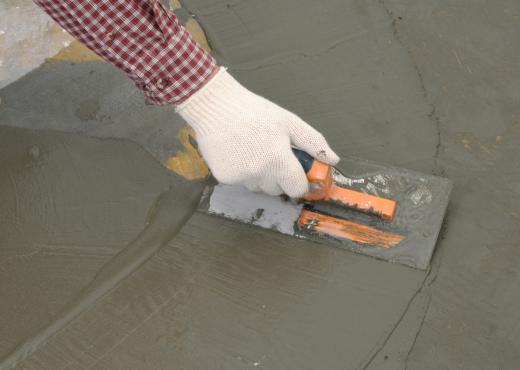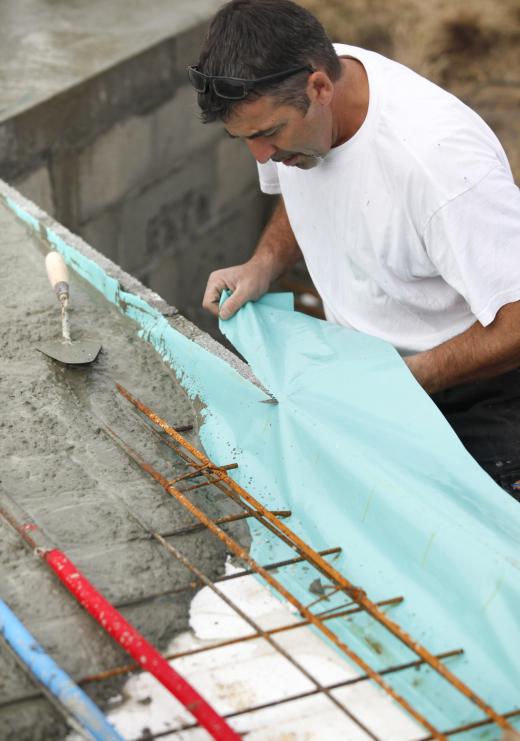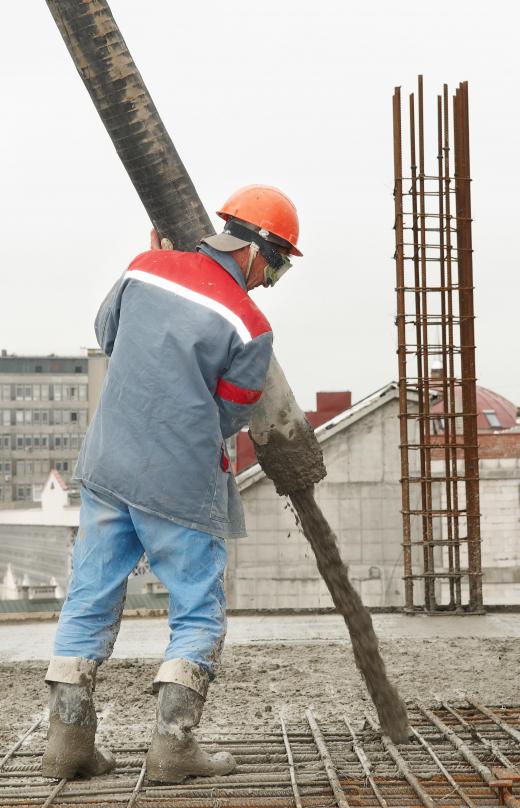Reinforced concrete is concrete mixed with very strong materials that increase the strength under tension of the concrete, making it less likely to fail. The development of reinforced concrete dates to the mid-1800s, and it proved to be a revolutionary innovation in building design. Today, reinforced concrete is one of the most common building materials in the world for both entire buildings and key structural elements that need to be able to withstand substantial stress.
A specific type of reinforced concrete, known as ferroconcrete, is reinforced with metal bars, plates, or grids. Other materials, including plastics, fibers, and glass, can also be used to make concrete stronger. These alternative materials may be used in environments where specific traits like transparency to radio and resistance to spalling, where concrete chips or flakes, are desired. Usually the alkaline environment inside the concrete protects the reinforcing materials, although the materials can also be treated to resist corrosion if there are concerns.

This building material must be carefully engineered. If it is not reinforced enough, the concrete can be weak and subject to failure. On the other hand, loading concrete too heavily with reinforcing materials can make it inflexible and brittle. When working with concrete, people must walk a fine line that allows the concrete to resist tension and stress while still providing some flexibility that will allow it to give before it fractures or fails in other ways.

Reinforced concrete is a popular building material because it is very strong, easy to work with, and affordable. It is commonly used for foundations and structural walls, as it can support significant weight. Entire structures can be made from concrete for reasons of cost or to meet a specific aesthetic need. This building material can be molded and shaped in ways that are not possible for some other materials, providing opportunities for innovative and visually intriguing design.

Materials used for reinforcement are usually roughly textured to encourage the concrete to fully adhere. This distributes the stresses throughout the concrete, reducing the risk of the development of hot spots of tension and stress. Builders must use concrete suitable for the application and take care to avoid problems, such as poor quality or bad curing conditions, that might compromise the reinforced concrete. If the concrete cures too quickly, is not handled well during pouring, or is made with bad materials, it can fail once it enters active use.
Ever since she began contributing to the site several years ago, Mary has embraced the exciting challenge of being a About Mechanics researcher and writer. Mary has a liberal arts degree from Goddard College and spends her free time reading, cooking, and exploring the great outdoors.

